Last-Minute NYC Holiday Gift Guide 🎁
We’ve created a holiday gift guide with presents for the intrepid New Yorker that should arrive just in time—


With much fanfare, the new Hudson Yards is officially open on Manhattan’s far West Side. Related Companies pulled out all the stops for Hudson Yards, the largest private real estate development in the United States by square footage, with a star-studded opening party Thursday night, and a grand opening ceremony Friday morning. Anderson Cooper hosted, with speeches by Senator Chuck Schumer (as well as Big Bird), and a performance by Grammy-nominated singer songwriter Andra Day and the Alvin Ailey dancers. Guests and press, like us, were treated to a first climb up the Vessel, the beehive shaped, climbable art installation by Thomas Heatherwick.
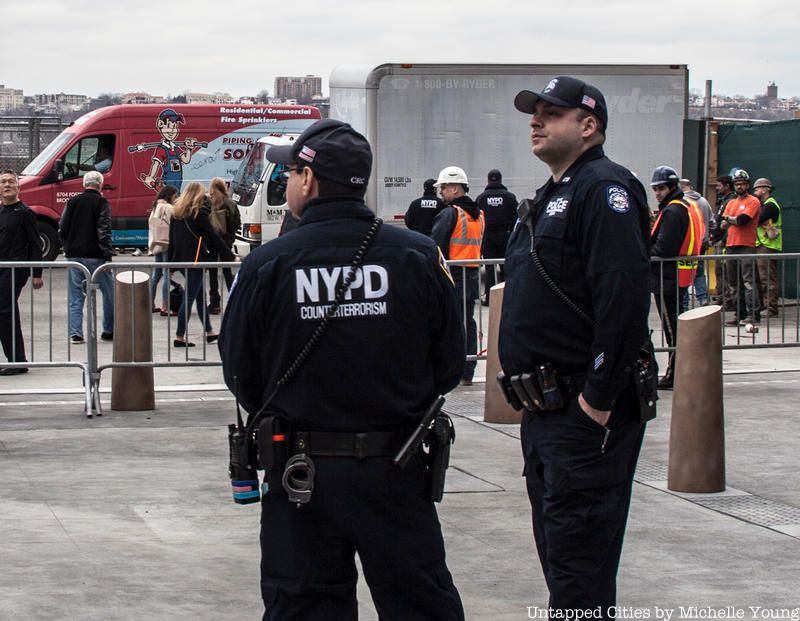
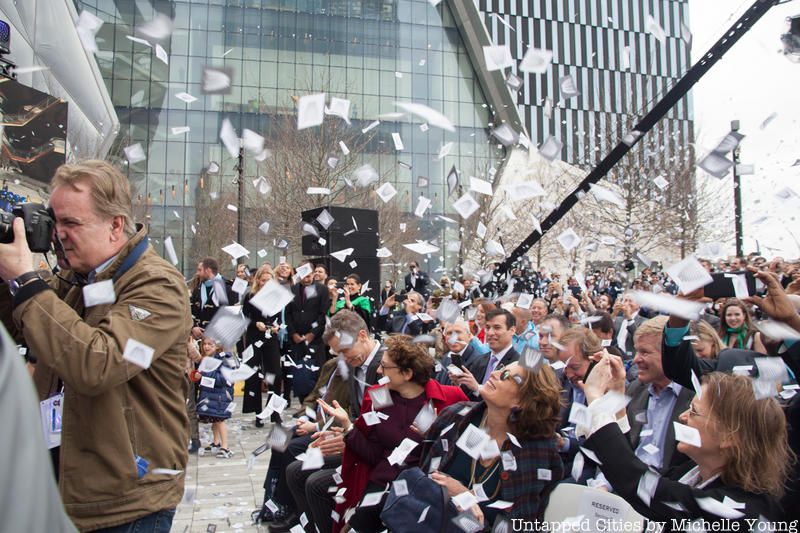
Hudson Yards-branded confetti shot in the air as the “rope” was cut at the opening ceremony
But here at Untapped Cities, we have been following this project for many years, beginning with a documentation deep below the street as the 7 line extension was under construction. In 2011, we took an illicit exploration along the abandoned third portion of the High Line, the final section of the elevated freight line that had not been converted into a park yet. The curve of the third section offered expansive views of the West Side rail yards, which service Penn Station – and a glimpse of the vast acreage that would be decked and transformed into an entirely new neighborhood.
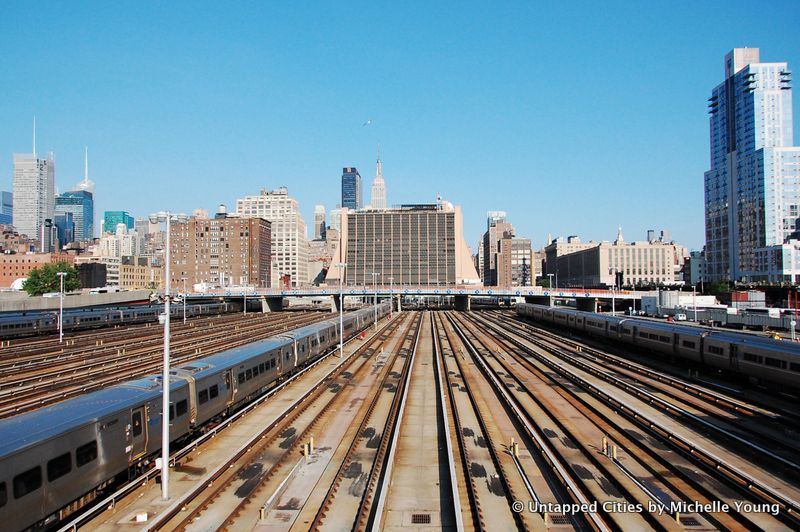
The rail yards in 2011
The promise, though glittering, was contrasted with the comforting, gritty industrialism of this last section of the High Line. It was, along with just a few other places, one of the last vestiges of a bygone New York City whose waterfront represented so much – an engine of economic hegemony, a physical manifestation of industrial decline, a place of expression for misfit artists and counterculture denizens, a haven for LGBTQ and other underground communities – a place that stood in contrast to the gleaming, shiny city that encroached on its periphery. Standing there, with helicopters taking off from the West 30th Street helipad and the iconic Starrett-Lehigh Building rising behind us, we had the sense that we were certainly one of the last to experience this place in quite this way. That proved prescient, as in 2013, guided tours of a site-specific art installation by Carol Bove began in this section of the High Line, an intermediary stage of controlled access before construction began.
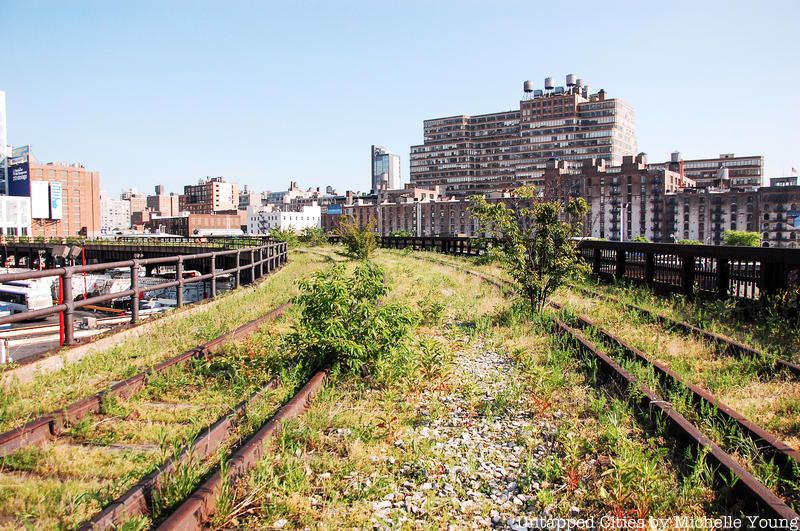
The last undeveloped section of the High Line in 2011
The third section of The High Line was completed in 2014 and the 7 line extension and new 34th-Street Hudson Yards station opened in 2015. The Vessel rose up alongside blue glass commercial and residential skyscrapers, some of which are occupied already. A building adjacent to Hudson Yards clad itself in blue glass, feeling the peer pressure.
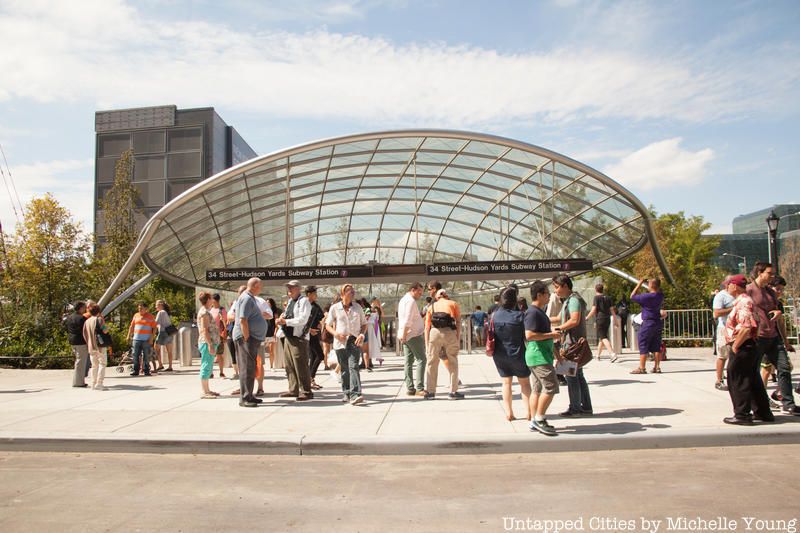 34th Street Hudson Yards station on the 7 Line Extension on opening day
34th Street Hudson Yards station on the 7 Line Extension on opening day
Reader comments elicited from our article and Instagram post about the Vessel yesterday reaffirmed how polarizing Hudson Yards is for New Yorkers. The architecture of Hudson Yards is nothing groundbreaking, though it jibes with other rebranded or rebuilt neighborhoods in Manhattan – like the World Trade Center or Columbus Circle. The design message is unabashedly clear, and has not swayed from its inception – this is a high-end luxury destination, for the employees of the corporate companies headquartered at Hudson Yards like L’Oréal, Coach and SAP, for the resident who will buy or rent multi-million dollar apartments here, for those seeking culinary offerings from renowned chefs like Thomas Keller, David Chang and José Andres, who has created a Spanish food hall at Hudson Yards (Mercado Little Spain).
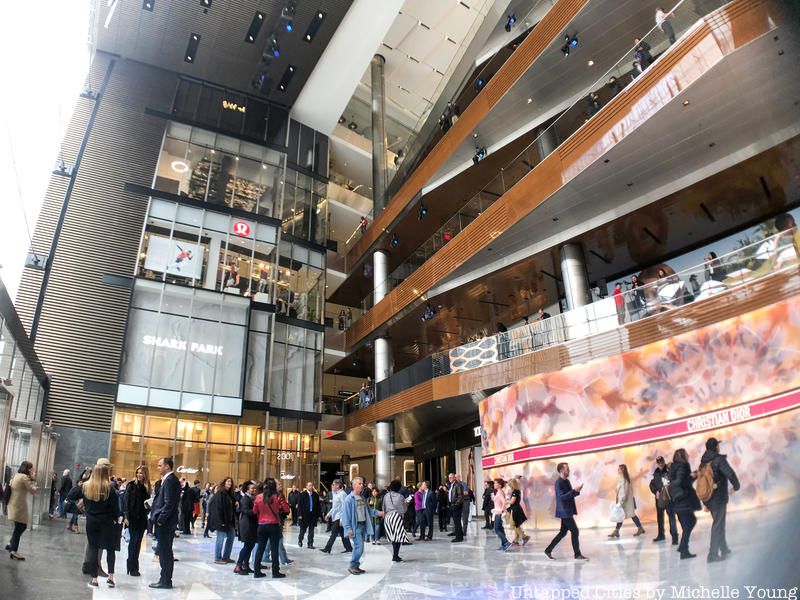
The Shops & Restaurants at Hudson Yards
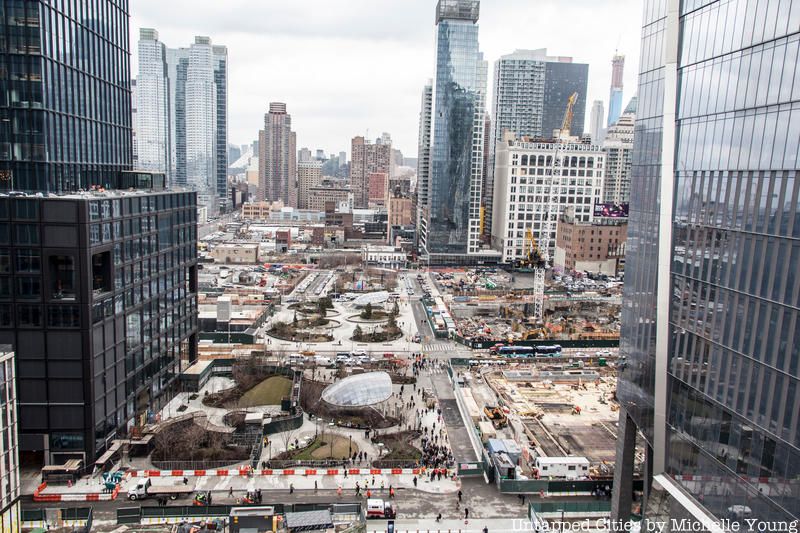
Construction as of yesterday at Hudson Yards
The real issue at stake is the increasing sense that New York City is no longer a place for everyone. That despite the tag lines on the construction barriers (“Together we can shape the future,” “We dare you to do it all,”), or the speech Friday by Senator Schumer referencing Emma Lazarus and the Statue of Liberty (“Give me your tired, your poor, your huddled masses yearning to breathe free”) as well as the openness of Dutch New Amsterdam, New Yorkers have already foreseen the future, and they are nervous. After all, the Dutch West India Company’s policy of tolerance in early New York was in support of one thing: making money.
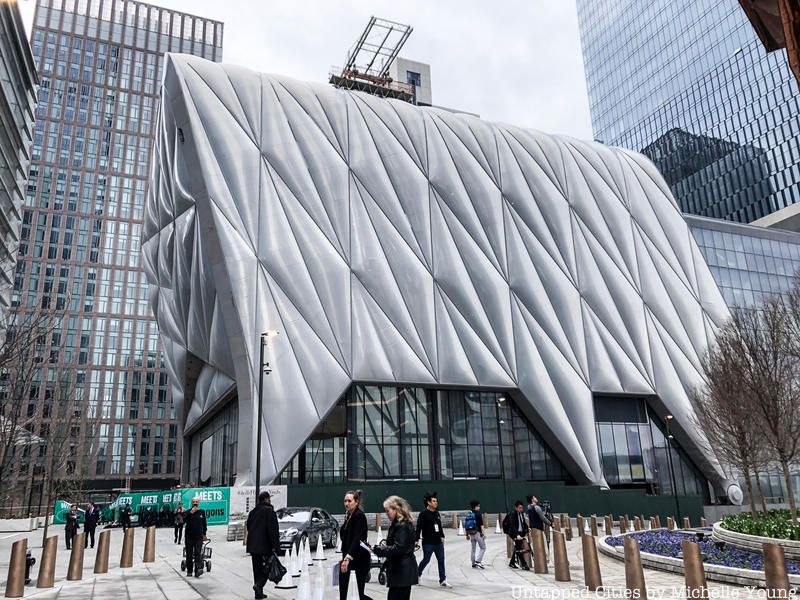
The Shed, designed by Diller Scofio + Renfro with Rockwell Group which will open in early April will be a new flexible, transformable arts center whose shell can literally slide open to accommodate all types of performing arts.
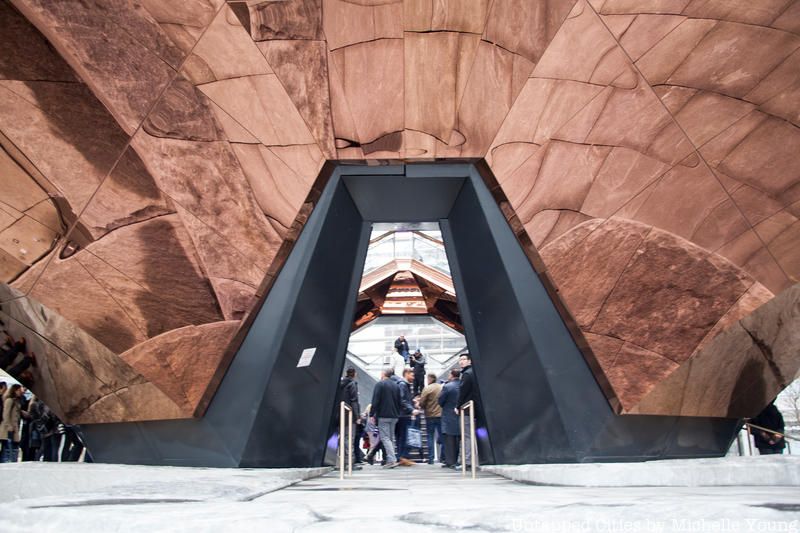
Still, it is true that when the Brooklyn Bridge was opened, when Rockefeller Center opened, and when the Flatiron Building was completed, public opinion was mixed. But each of those projects was imbued with a sense of civic-mindedness that no longer exists in the same way today. This is one reason why Hudson Yards’ contributions, for those who will give some credit, will be overshadowed. That despite the jobs that were created here, the infrastructure improvements that have come, the creation of new public spaces, and the sheer engineering feat of it all, the nagging question of, “For whom is this for?” remains. With $20 billion, could more have been done? And where is everyone else to go? [Side note: representation was nearly absent at the opening ceremony: not one speaker was female or a person of color].
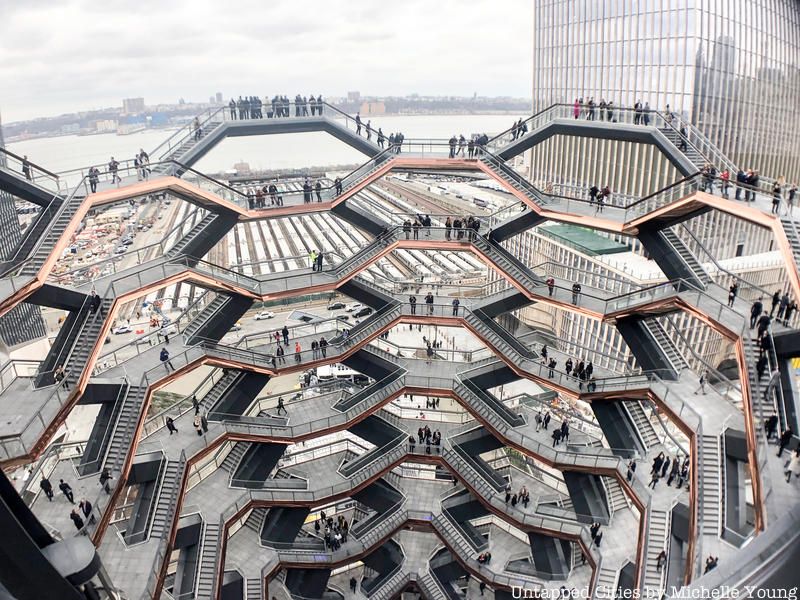
It is not surprising then that the most impactful speech of Friday’s press opening was from Thomas Heatherwick, the designer of the Vessel. All of his works have a civic-mindedness imbued with a sense of futurism and optimism. Like all great designers, he did not promise a utopian vision or a predetermined one. Rightly so, he was passing off his creation to have its own narrative written with the participation of those that will walk up and down its steps. His aim was simply, to “make something that would be free for every user,” he said, “It’s just a platform for whatever is going to happen on it, with it, for decades to come.” He then made a confession: the Vessel would not be complete until the first visitors went up. “The whole point,” he said, “was not to have an inanimate object. The whole point is to be lifting up hundreds of people and thousands of people every day. Like the Italian promenade…to share in an extraordinary experience. It’s not finished until you’re on it. We’re waiting and watching what’s going to happen.”
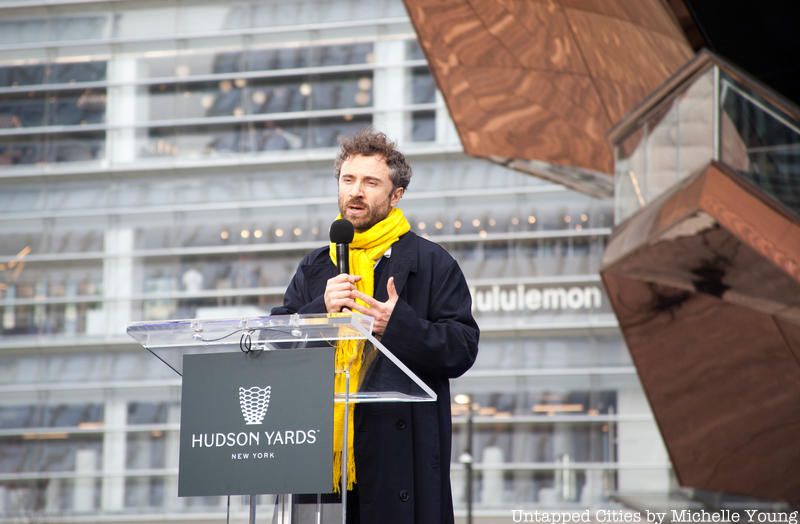
Thomas Heatherwick
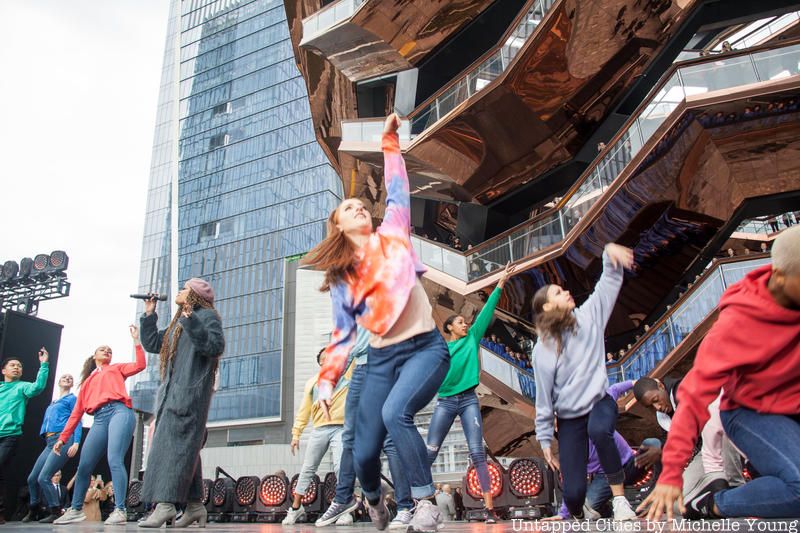
This is precisely what will make the Vessel stand the test of time here at Hudson Yards, whatever your opinion of the design may be. It will be the draw that brings people to Hudson Yards in the here and now. It will certainly be one of the most photographed places in New York City, and it will likely enter the anthology of landmarks that define the city. It is, in a word, striking. (Did we mention the climb is really fun and the views are great?).
As for Hudson Yards, we will be waiting and watching to see what it will become, like Heatherwick will do with the Vessel. Hudson Yards is not the last undeveloped parcel in New York City or the last rail yard to be decked. Will the next generation’s developers, financiers, designers, urban planners, politicians and technocrats learn from what is being built here? We hope so.
This op-ed is written by Untapped Cities founder Michelle Young. She holds a Master of Science in Urban Planning from Columbia University Graduate School of Architecture, Planning and Preservation, where she is an Adjunct Professor of Architecture. She rarely opines but was inspired to do so today based on all of Untapped Cities’ readers and follower comments about Hudson Yards.
Next, check out views from atop the Vessel and do join us for our tour today of the Remnants of Penn Station, where we will uncover pieces of the original 1910 station still hidden in plain sight, talk about the expansion of Penn Station, and the impact of Hudson Yards.
Subscribe to our newsletter